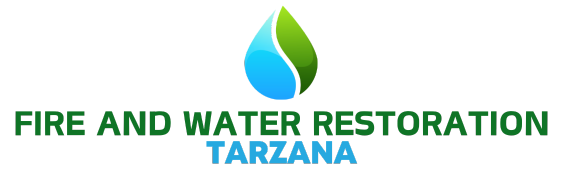Experiencing fire or water damage in your home or business can be devastating. Whether it’s the result of a house fire, burst pipe, natural disaster, or appliance failure, the aftermath can leave you overwhelmed and unsure of what to do next. Your first instinct may be to immediately start cleaning up, but it’s essential to understand that rushing into action without a clear plan could lead to more damage, safety hazards, or problems with insurance claims.
To help you navigate this stressful situation, here are the most important do’s and don’ts of fire and water damage cleanup. Knowing how to respond effectively can protect your property, your health, and your finances.
The Do’s
Do Ensure Safety First
Before you enter a fire or water-damaged property, ensure it’s safe to do so. Structural integrity may be compromised, electrical systems could be dangerous, and harmful substances like smoke, soot, mold, or contaminated water might be present. If emergency services were involved, wait for their clearance before re-entering the area.
If the damage is water-related, be aware of slipping hazards, potential electric shocks, and the presence of bacteria or sewage in the water. In the case of fire damage, check for weak ceilings, falling debris, and lingering smoke or toxic fumes.
Do Shut Off Utilities
If it’s safe and you can access your main utility switches, turn off the water, gas, and electricity. This can prevent further damage, reduce the risk of fire or electrocution, and protect restoration workers and your family from potential hazards.
Do Document the Damage
Before doing any cleanup, take clear, detailed photos and videos of the damage. This includes damaged walls, ceilings, floors, personal items, and furniture. Documentation is vital for your insurance claim process. Even if you plan to hire a restoration company, keep your own records.
Do Contact Your Insurance Provider
Notify your insurance company immediately. They may send an adjuster to assess the damage and guide you through the next steps. In some cases, they may recommend or authorize specific restoration companies to handle the work. Keep track of all communication and gather any necessary paperwork.
Do Call a Restoration Professional
Certified restoration professionals are trained to handle the complexities of fire and water damage. They have specialized equipment, knowledge of building materials, and the ability to assess both visible and hidden damage. Professional cleanup can help prevent long-term problems like mold, structural issues, and recurring odors.
Do Ventilate and Start Drying
If you’re dealing with water damage and it’s safe to do so, open windows and doors to promote airflow. Use fans and dehumidifiers to begin the drying process and prevent mold growth. In cases of fire, ventilation also helps to reduce lingering smoke odors.
Do Remove Wet and Damaged Items
Start removing water-damaged or fire-damaged items like rugs, clothing, curtains, and upholstery. This helps reduce moisture in the area and prevents further contamination. However, store these items somewhere safe if your insurance provider needs to inspect them before disposal.
The Don’ts
Don’t Use Electrical Appliances or Outlets
Avoid using any electrical items in affected areas until a qualified electrician or restoration professional has inspected the property. Water can compromise wiring and cause short circuits or electrical fires, while fire can damage electrical systems in ways that aren’t always visible.
Don’t Attempt to Clean Soot or Smoke Damage Yourself
Soot from fire damage is oily and acidic. Using regular household cleaners or wiping it improperly can smear the residue, cause permanent stains, and worsen odors. Smoke particles can also settle in hidden places like HVAC systems, posing long-term health risks. This is a job best left to experts with the right tools and techniques.
Don’t Use a Regular Vacuum on Wet Surfaces
Using a household vacuum on water-damaged areas can damage the vacuum or create an electrical hazard. Only use wet/dry shop vacs that are rated for water cleanup, and even then, only if the environment is safe.
Don’t Wait to Start Cleanup
Time is critical. Waiting too long can result in more extensive damage, including mold growth (which can start in as little as 24-48 hours), wood rot, and permanent staining. While you may need to wait for insurance approval for major restoration, you can still take small, safe steps like removing standing water and airing out the property.
Don’t Discard Everything Immediately
It might be tempting to toss out damaged items, but your insurance adjuster may need to see them to assess your losses properly. If the items are not a health hazard, keep them in a separate, safe location for inspection.
Don’t Ignore Hidden Damage
Just because a surface looks dry or clean doesn’t mean it’s safe. Moisture can hide behind walls, under floors, or in ceilings, and smoke can seep into insulation. Ignoring these areas can lead to major problems later, like structural issues or mold infestations. Professionals use moisture meters and infrared cameras to locate hidden damage.
Don’t Handle Hazardous Materials
If your home contains asbestos, lead-based paint, or sewage-contaminated water, do not attempt to clean it yourself. These materials are dangerous and require proper containment and disposal by trained professionals using protective gear and certified processes.
Dealing with fire or water damage is undoubtedly stressful, but taking the right steps can make a significant difference in your recovery. Acting quickly and cautiously, documenting everything, and working with professionals can protect your property and your health while ensuring that insurance claims are handled smoothly.
Remember: safety comes first, cleanup should be methodical, and help from trained experts is always the best choice. Whether you’re facing smoke damage or a flooded basement, following these do’s and don’ts can help you get your life back on track as quickly and safely as possible.
